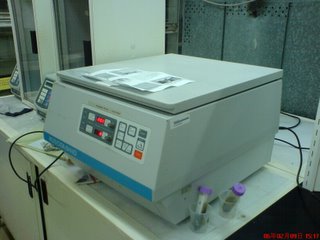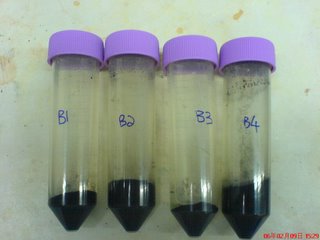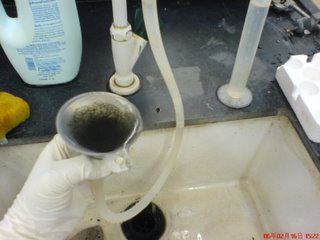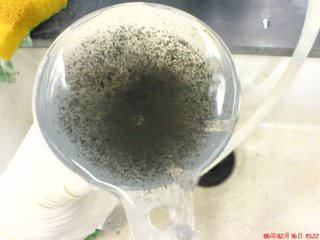 Turbidity is caused by the presence in water of particulate matter, such as clay, slit, colloidal particles, and plankton and other microscopic organisms. In other words turbidity is how clear the water is. The greater the amount of total suspended solids (TDS), the dirtier the water appears and the higher the measure turbidity.
Turbidity is caused by the presence in water of particulate matter, such as clay, slit, colloidal particles, and plankton and other microscopic organisms. In other words turbidity is how clear the water is. The greater the amount of total suspended solids (TDS), the dirtier the water appears and the higher the measure turbidity. Turns out that using the centrifudge thingy is not the right method as our aim is not to compress the sludge and measure the turbidity of the supernatent but to link the turbidty of the supernatent to the strength of the granules or microbials, as it should be more accurately called that. Granules must be consistently greather than a specified diameter and of a certain shape factor. Random pieces of sludge / dirt cannot be called granules.
Turns out that using the centrifudge thingy is not the right method as our aim is not to compress the sludge and measure the turbidity of the supernatent but to link the turbidty of the supernatent to the strength of the granules or microbials, as it should be more accurately called that. Granules must be consistently greather than a specified diameter and of a certain shape factor. Random pieces of sludge / dirt cannot be called granules. The black stuff at the bottom is known as the pallet & the liquid is the supernatent. This is after it has been spun around at xxx (can't remember because I left my data in the lab) RPM for 30 minues.
The black stuff at the bottom is known as the pallet & the liquid is the supernatent. This is after it has been spun around at xxx (can't remember because I left my data in the lab) RPM for 30 minues.
http://www.ourlake.org/html/turbidity.html
http://en.wikipedia.org/wiki/Turbidity
http://www.thirteen.org/edonline/studentstake/water/BronxRiver/turbidity/turbidity.htm We take a fixed amount of samle and wash away all the fines (very small particles) using the somewhat unorthodox arrangement. It's somehow arbitary because I do not know exactly the rate of flow of water into the sample & there is really no exact way to get the same rate of flow everytime I perform this experiemt. To minimize differences, each time, I wash away the fines of samples fom the 4 different HRTs & I leave the tap running in between. It's a waste of water but does anyone have a better idea?
We take a fixed amount of samle and wash away all the fines (very small particles) using the somewhat unorthodox arrangement. It's somehow arbitary because I do not know exactly the rate of flow of water into the sample & there is really no exact way to get the same rate of flow everytime I perform this experiemt. To minimize differences, each time, I wash away the fines of samples fom the 4 different HRTs & I leave the tap running in between. It's a waste of water but does anyone have a better idea? This sample contains a lot of fines & it flows radially outwards & into the sink. What is left behind are the larger particles & they go into the nice test-tube thingy with the lovely purple cap. It is then shaken at 250 RPM for 30 minutes, if I remembered correctly.
This sample contains a lot of fines & it flows radially outwards & into the sink. What is left behind are the larger particles & they go into the nice test-tube thingy with the lovely purple cap. It is then shaken at 250 RPM for 30 minutes, if I remembered correctly.
So how does the turbidy relate to the strength of the granules? Well, when we take about strength, there are many types of strength, as it is a very general term. We are looking at the cohesive strength of the particles. How well they still stick to each other after being shaken. SO if they don't stick to each other very well, i.e. low cohesive strength, there will be fines that are seperated from the particles and this makes the supernatent turbid, i.e. high turbidity. Vice versa (it's Latin).
Get it? No? I don't get it too!!! Crap!!!
Ja neh!!!
Sunday, February 12, 2006
Turbidity of digested sludge
Posted by raymond chng kwang hwee at Sunday, February 12, 2006
Labels: school
Subscribe to:
Post Comments (Atom)
0 comments:
Post a Comment